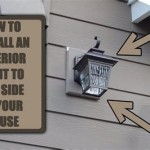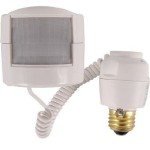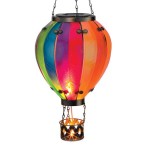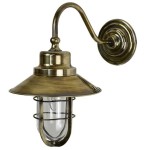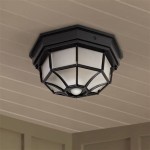How To Design An Outdoor Lighting Plan
Creating an outdoor lighting plan is essential for not only enhancing the beauty of your home's exterior but also for increasing safety and security. When it comes to designing an outdoor lighting plan, there are many factors to consider, including the type of lighting, the placement of the lighting fixtures, and the overall ambiance you want to create. In this article, we will discuss some of the essential aspects of designing an outdoor lighting plan and provide tips and advice to help you create a beautiful and functional outdoor space.
1. Determine Your Lighting Needs
The first step in designing an outdoor lighting plan is to determine your lighting needs. What do you want to achieve with your outdoor lighting? Do you want to create a warm and inviting atmosphere for entertaining guests? Do you want to illuminate walkways and stairs for safety? Do you want to highlight architectural features of your home or create a dramatic focal point in your yard? Once you have a clear idea of your needs, you can start to choose the right lighting fixtures and plan their placement.
2. Choose the Right Lighting Fixtures
There are many different types of outdoor lighting fixtures available, each with its own unique purpose and style. Some of the most popular types of outdoor lighting fixtures include:
- Path lights: These lights are designed to illuminate walkways and stairs, providing safety and convenience. They are typically low to the ground and emit a soft, diffused light.
- Floodlights: These lights are used to illuminate large areas, such as patios, driveways, and backyards. They emit a bright, focused beam of light, making them ideal for security purposes.
- Spotlights: These lights are used to highlight specific features of your home or yard, such as trees, shrubs, or sculptures. They emit a narrow beam of light, allowing you to create dramatic effects.
- Pendant lights: These lights are hung from a ceiling or overhang and are often used to create a warm and inviting ambiance. They emit a soft, diffused light, making them ideal for outdoor dining areas or seating areas.
3. Plan the Placement of the Lighting Fixtures
Once you have chosen the right lighting fixtures, you need to plan their placement. When placing your lighting fixtures, there are a few things to keep in mind:
- Safety first: Make sure to place your lighting fixtures in a way that minimizes glare and doesn't obstruct walkways or driveways.
- Consider the ambiance: Think about the overall ambiance you want to create with your outdoor lighting. Do you want a bright and cheerful space or a more subdued and romantic atmosphere?
- Highlight architectural features: Use your lighting to highlight architectural features of your home, such as columns, arches, and eaves.
- Create focal points: Use your lighting to create focal points in your yard, such as a water feature, a statue, or a tree.
4. Control Your Lighting
Once you have installed your outdoor lighting fixtures, you need to decide how you want to control them. There are a few different options available, including:
- Manual control: You can manually turn your lights on and off using a switch or timer.
- Motion sensors: Motion sensors can be used to turn your lights on automatically when they detect movement. This is a great way to deter intruders and improve safety.
- Photocells: Photocells can be used to turn your lights on automatically at dusk and off at dawn. This is a convenient way to ensure that your lights are always on when you need them.
- Smart home systems: Smart home systems allow you to control your outdoor lighting from your smartphone or tablet. This gives you the ability to turn your lights on and off remotely, set schedules, and even create custom lighting scenes.
5. Maintain Your Lighting System
Once you have installed your outdoor lighting system, it is important to maintain it regularly. This includes cleaning the fixtures, checking the bulbs, and making sure that the wiring is in good condition. By following these simple tips, you can keep your outdoor lighting system looking its best and functioning properly for years to come.

Plan Your Landscape Lighting Design Twilight Designs

Outdoor Lighting How To Design A Garden Scheme Pt Iii

Outdoor Lighting How To Design A Garden Scheme Pt Iii

Landscape Lighting Design Jeffrey Heid Architect

Outdoor Lighting How To Design A Garden Scheme Pt Iii

Landscape Lighting Design Overview

Landscape Lighting For Winter My Design42

Outdoor Landscape Lighting Effects Garden Design
Hamptons Landscape Lighting Luxury Outdoor Design Installation Service
Hamptons Landscape Lighting Luxury Outdoor Design Installation Service

